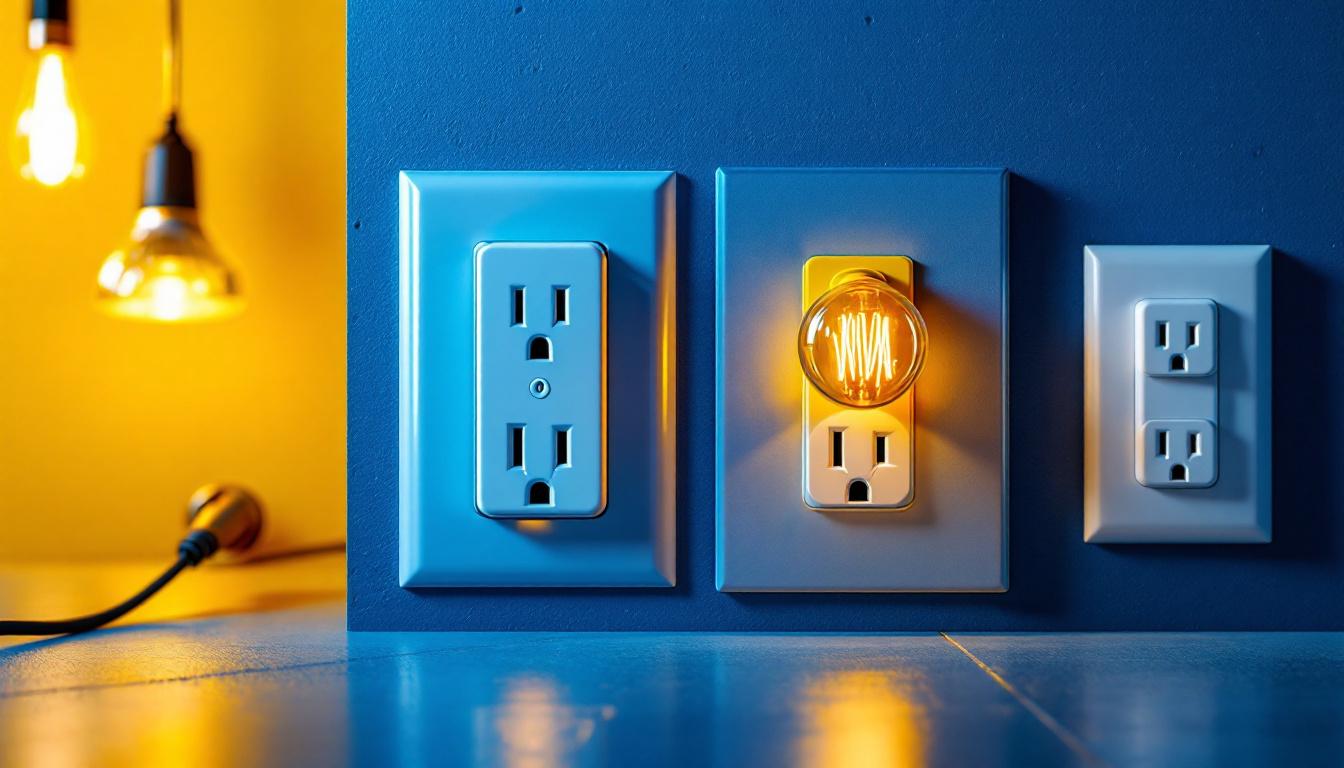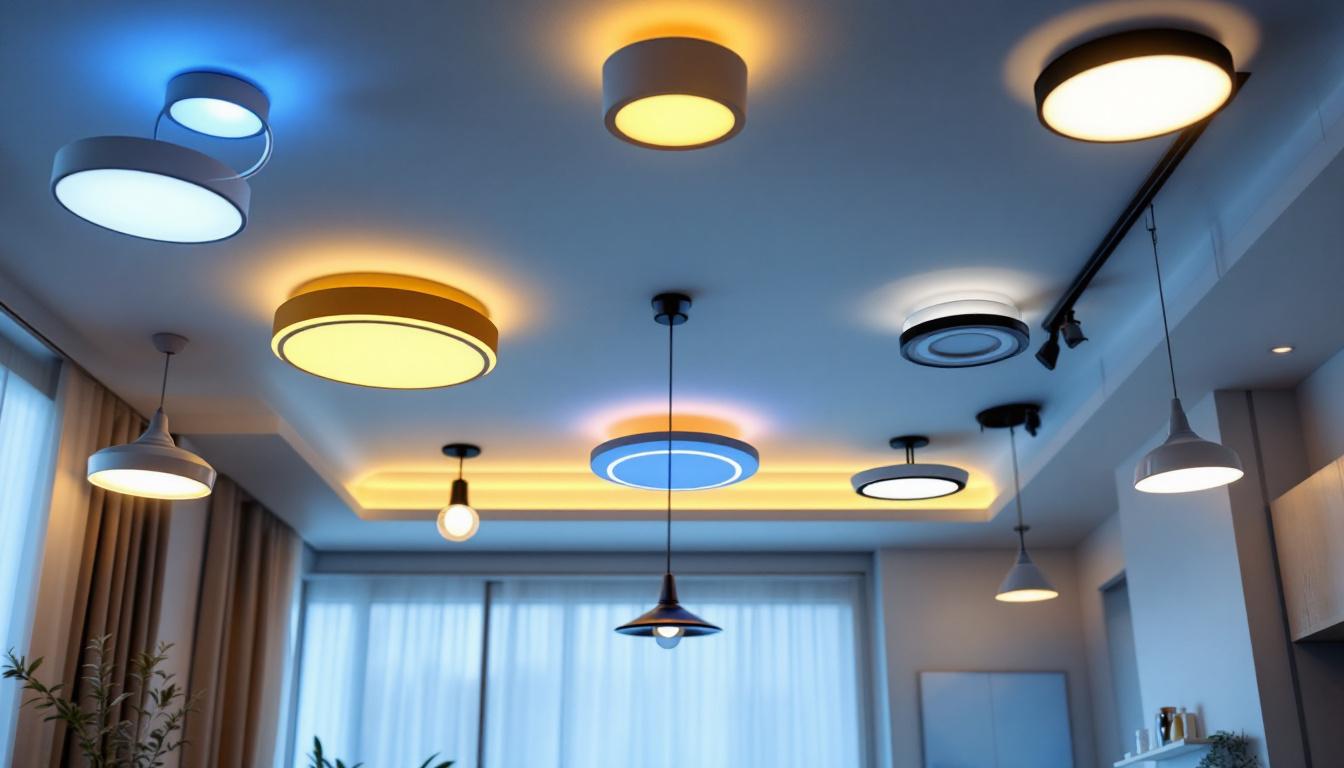
Understanding the various types of electrical outlets is crucial for lighting contractors who aim to deliver effective and safe lighting solutions. With the evolution of technology and the increasing demand for energy-efficient systems, the types of electrical outlets available have expanded significantly. This article delves into the four primary types of electrical outlets and explores how they are transforming the lighting industry.
Standard outlets, also known as Type A and Type B outlets, are the most common electrical outlets found in residential and commercial buildings. Typically, these outlets are rated for 15 to 20 amps and operate at 120 volts, making them suitable for a wide range of lighting fixtures and appliances.
The design of standard outlets includes two vertical slots and a round hole for grounding. The vertical slots accommodate the flat prongs of plugs, while the ground hole provides an additional layer of safety. This configuration is particularly effective for most standard lighting applications, from table lamps to ceiling fixtures. In addition to their basic design, many modern outlets now come equipped with features such as built-in USB ports, allowing for the direct charging of devices without the need for an adapter. This evolution in design reflects the increasing reliance on technology and the need for convenience in our daily lives.
Standard outlets are versatile and can be found in various settings, including homes, offices, and retail spaces. They can power everything from incandescent bulbs to modern LED fixtures. For lighting contractors, understanding the limitations and capabilities of standard outlets is essential for ensuring that the installed lighting systems meet the electrical demands of the fixtures. Moreover, the adaptability of standard outlets allows for creative lighting solutions, such as the use of plug-in wall sconces or portable lamps that can be easily repositioned. This flexibility not only enhances the aesthetic appeal of a space but also allows for dynamic lighting arrangements that can be adjusted based on the time of day or specific activities.
When working with standard outlets, safety should always be a priority. Overloading an outlet can lead to overheating and pose a fire risk, so it’s crucial to adhere to the amperage ratings. Additionally, using surge protectors can help safeguard sensitive electronics from power spikes. Regular inspections of outlets for signs of wear, such as discoloration or loose connections, can prevent potential hazards. Furthermore, in homes with young children, tamper-resistant outlets are an excellent option, as they feature a built-in mechanism that prevents foreign objects from being inserted into the slots, thereby enhancing safety without sacrificing functionality.
Ground Fault Circuit Interrupter (GFCI) outlets are designed to protect against electrical shock by monitoring the flow of electricity. If an imbalance is detected, such as when electricity flows through a person instead of the intended circuit, the GFCI outlet will quickly cut off power. This feature makes GFCI outlets particularly important in areas where moisture is present, such as bathrooms and kitchens. The technology behind GFCI outlets is quite sophisticated; they continuously monitor the current flowing through the circuit, and within milliseconds, they can detect even the smallest discrepancies. This rapid response is what makes them so effective in preventing serious injuries or fatalities caused by electric shock.
For lighting contractors, the use of GFCI outlets is crucial in ensuring safety, especially in environments where water and electricity may come into contact. Installing GFCI outlets in outdoor lighting applications or near water features can prevent accidents and enhance the overall safety of the lighting system. Furthermore, GFCI outlets can also be beneficial in creative lighting designs, allowing for the safe installation of decorative lighting in areas that might otherwise be hazardous. By integrating GFCI outlets, contractors can expand their design options while maintaining a high standard of safety, which is increasingly valued by clients looking for both aesthetics and security in their lighting solutions.
Many building codes require GFCI outlets in specific locations, particularly in residential settings. Contractors must be aware of these regulations when planning lighting installations to ensure compliance and avoid potential liabilities. Utilizing GFCI outlets not only meets safety standards but also provides peace of mind for clients. Additionally, understanding the nuances of local electrical codes can empower contractors to educate their clients about the necessity of GFCI outlets, fostering trust and transparency. This knowledge can also open up discussions about other safety features and upgrades that might be beneficial, such as surge protectors or circuit breakers, further enhancing the safety and efficiency of the electrical system in the home.
Arc Fault Circuit Interrupter (AFCI) outlets are designed to prevent electrical fires caused by arcing faults. These outlets monitor electrical currents and can detect irregularities that may indicate a potential fire hazard. When such irregularities are detected, AFCI outlets will interrupt the circuit, reducing the risk of fire. This technology is particularly crucial in areas where electrical devices are frequently used, such as kitchens and living rooms, where the risk of an electrical fire is heightened due to various appliances and wiring configurations.
For lighting contractors, the integration of AFCI outlets into lighting systems is a significant advancement in fire safety. These outlets are especially beneficial in residential settings where older wiring may pose a risk. By incorporating AFCI outlets, contractors can provide an additional layer of safety, ensuring that the lighting installations are not only functional but also secure. Furthermore, AFCI technology is continuously evolving, with newer models offering enhanced sensitivity and faster response times, which can further minimize the risk of fire in homes.
Clients are increasingly concerned about safety and fire risks in their homes and businesses. By utilizing AFCI outlets in lighting installations, contractors can enhance client confidence in their work. This proactive approach to safety can set a contractor apart in a competitive market, showcasing a commitment to quality and care. Additionally, educating clients about the benefits of AFCI outlets can foster a deeper understanding of electrical safety, allowing them to appreciate the value of investing in such technology. Many clients may not be aware of the potential dangers posed by outdated electrical systems, and by highlighting the importance of AFCI outlets, contractors can position themselves as knowledgeable professionals who prioritize the well-being of their clients.
As building codes and safety regulations evolve, the use of AFCI outlets is becoming increasingly mandated in new construction and renovation projects. This shift not only reflects a growing awareness of fire safety but also aligns with broader trends in energy efficiency and sustainable building practices. Contractors who stay ahead of these regulatory changes can ensure compliance while also appealing to environmentally conscious clients. Moreover, the future of AFCI technology may include smart features, such as connectivity to home automation systems, allowing homeowners to monitor electrical usage and potential hazards remotely. This integration could further enhance safety and provide peace of mind, making AFCI outlets an even more attractive option for modern lighting systems.
Smart outlets represent the latest innovation in electrical outlet technology, allowing for remote control and automation of lighting systems. These outlets can be connected to Wi-Fi networks, enabling users to control their lighting through smartphones, tablets, or voice-activated devices. The rise of smart home technology has made smart outlets increasingly popular among homeowners and businesses alike.
For lighting contractors, smart outlets offer an opportunity to integrate advanced lighting solutions into their projects. By utilizing smart outlets, contractors can create customizable lighting experiences that cater to the specific needs of clients. This level of integration enhances the functionality of lighting systems, allowing users to adjust brightness, color, and timing with ease.
Smart outlets can contribute to energy efficiency by allowing users to monitor and control their energy consumption. This capability is particularly appealing to clients looking to reduce their energy bills and environmental footprint. By incorporating smart outlets into lighting installations, contractors can provide clients with a modern, energy-efficient solution that aligns with contemporary sustainability goals.
The evolution of electrical outlets has significantly impacted the lighting industry, providing contractors with a range of options to enhance safety, functionality, and efficiency. Understanding the four primary types of electrical outlets—standard, GFCI, AFCI, and smart outlets—enables lighting contractors to make informed decisions that meet the diverse needs of their clients.
As technology continues to advance, the integration of these outlets into lighting systems will likely become more prevalent, paving the way for innovative solutions that prioritize safety, convenience, and energy efficiency. By staying informed about the latest developments in electrical outlet technology, lighting contractors can position themselves as leaders in the industry, ready to tackle the challenges and opportunities that lie ahead.
In summary, the choice of electrical outlets is not merely a technical consideration; it is a strategic decision that can influence the overall success of lighting projects. By embracing the advancements in outlet technology, contractors can enhance their service offerings, improve client satisfaction, and contribute to a safer, more efficient lighting landscape.
Ready to elevate your lighting installations with the latest electrical outlet technology? Look no further than LumenWholesale, where we provide lighting contractors with superior, spec-grade lighting products at unbeatable wholesale prices. Our extensive selection not only meets but exceeds industry standards, ensuring you deliver reliable and high-performance lighting solutions for every project. Say goodbye to local distributor markups and hello to hassle-free bulk buying with free shipping. Don’t compromise on quality or value; choose LumenWholesale for the perfect blend of affordability and convenience. Discover our wholesale lighting at the best value today and light up your projects with confidence.

Discover how floorlamps play a crucial role in lighting contractors’ projects, influencing design choices, functionality, and ambiance.

Discover why staying updated on the best ceiling lights is crucial for every lighting contractor.

Discover the importance of staying updated on outdoor lighting trends and technologies for contractors.

Discover the ultimate guide to recessed lighting for your home.